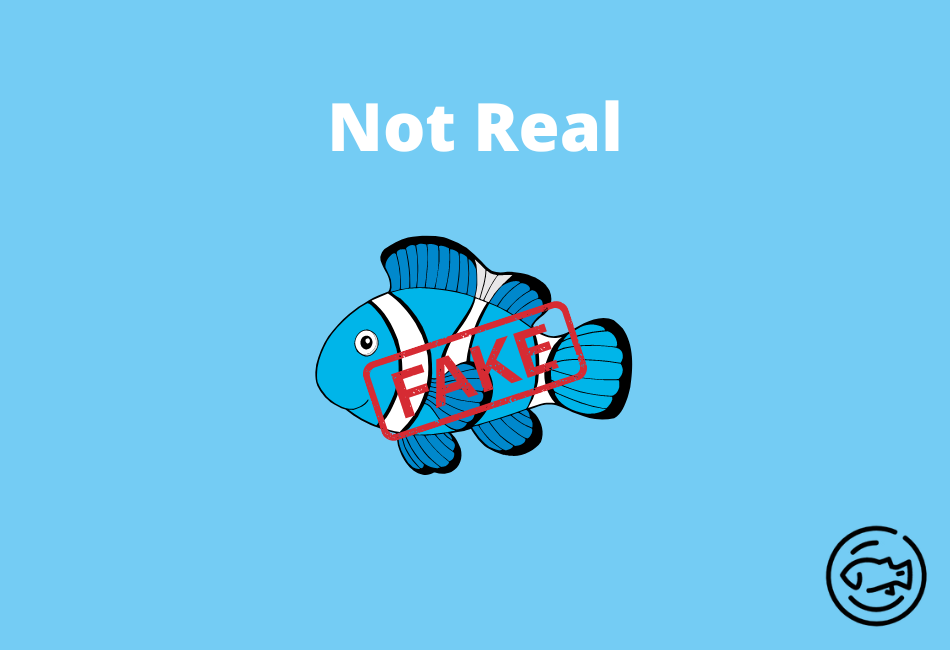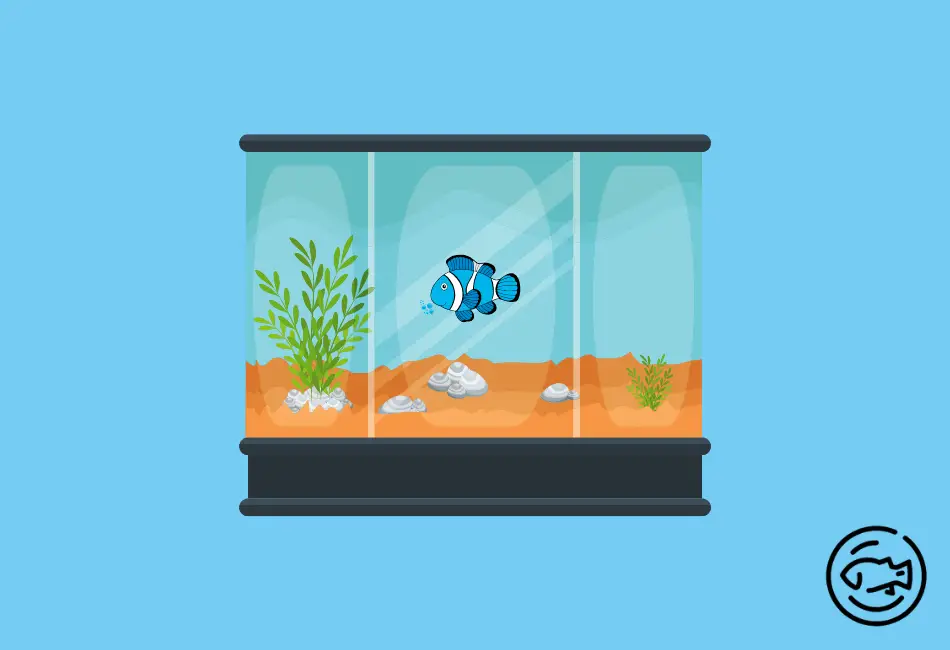Clownfish are a group of fish that are characterized by their bright colors and patterns. They are found in tropical waters worldwide and are popular among aquarium owners. While most clownfish are orange or red, one type of clownfish stands out from the rest: the Blue Clownfish.
Despite its name, the blue clownfish is not a real fish species. It was created as a hoax by marine biologist Franklyn Sprague in the early 1900s. Sprague took a normal clownfish and dyed it blue using a chemical called aniline. He then released the fish into the wild, where it quickly spread to other parts of the world.
The story of the blue clownfish began as a prank. In 2004, someone created a fake article and website claiming that blue clownfish had been discovered in the Great Barrier Reef. The article went viral and fooled many people.
While some people believe that this clownfish is a real species, it is nothing more than a dyed clownfish. The blue coloration does not occur naturally in any clownfish species and is only temporary. The dye will eventually fade away, revealing that the fish is not true blue clownfish.
If you’re interested in keeping a clownfish as a pet, be sure to get one that is naturally orange or red.
These clownfish are not real and are not suitable for aquariums.
If you’re looking for a unique and colorful addition to your home aquarium, you may be wondering if these true blue clownfish exist or not.
Are Blue Clownfish Real?

The answer is No; there are no naturally occurring blue clownfish.
The only “blue clownfish” that exist result from genetic mutations or intense color breeding. These fish are rare, expensive, and not commonly found in pet stores.
So why do people keep asking about blue clownfish? Well, it all started with a hoax.
A few years ago, someone created a fake website and wrote an article claiming that these clownfish had been discovered in the wild. This was untrue, but the story went viral, and many people believed it.
As a result, there was a lot of interest in these clownfish, and even some retailers began selling “blue clownfish” that were actually just normal clownfish that had been dyed blue.
Of course, dyeing a fish is not good for their health, so we do not recommend buying these clownfish (or any other dyed fish). If you’re looking for a unique color clownfish for your aquarium, your best bet is to find one of the rare mutation or bred varieties. But be prepared to pay a high price for one of these fish!
A few different types of clownfish have been bred to display unique colors.
One of the most popular is the ocellaris clownfish, which can be found in various colors, including orange, red, and even blue. These fish are typically more expensive than their wild-type counterparts, but they make for a beautiful and eye-catching addition to any aquarium.
If you’re willing to pay top dollar for a truly unique color clownfish, you may be able to find one of the rare mutation varieties.
One example is the platinum clownfish, which is an albino variety of the ocellaris clownfish. These rare hidden fish can sell for hundreds or even thousands of dollars.
So, there you have it! Blue stripe clownfish do not exist in the wild, but a few different types of clownfish have been bred to display unique colors. If you’re looking for a one-of-a-kind fish for your aquarium, be prepared to pay a high price for one of these rare beauties!
If you’re a fan of Finding Nemo, you might be disappointed to learn that blue clownfish are not real.
These fish’s resonant color spin-offs from innovative camera work and unique effects. In reality, clownfish are orange in color. So if you’re ever looking for a Nemo of your own, don’t expect to find a blue one!
Why The Blue Clownfish Is Not Real, And It Was A Prank!

1) The blue color of clownfish is actually just a result of clever camera work and special effects.
2) Clownfish are orange with white stripes in reality.
3) The blue stripe clownfish was created as a prank.
4) There is no such thing as a blue clownfish species.
5) Scientists have never found a blue clownfish in nature.
6) The blue clownfish doesn’t exist in the wild.
7) These clownfish are unreal because they haven’t been bred in captivity.
Where Do They Come From?
As we mentioned before, blue clownfish do not exist in the wild. The only “blue clownfish” that exist result from genetic mutations or intense color breeding. These fish are rare, expensive, and not commonly found in pet stores.
Most of them are bred in captivity, although a few are caught as wild specimens. If you’re looking for truly one-of-a-kind clownfish, your best bet is to find a captive-bred variety.
If you’re willing to pay top dollar for a truly unique color clownfish, you may be able to find one of the rare mutation varieties.
So there you have it! If you’re looking for these clownfish, your best bet is to find one that has been bred in captivity. These fish are rare and expensive, but they make a stunning addition to any aquarium.
Are There Any Other Unique Color Clownfish?
Clownfish are one of the most popular fish in the aquarium hobby. They are easily recognizable with their orange and reflective white bars, and many aquarists aspire to own a clownfish. However, one clownfish that has caused quite a stir in the aquarium community – is the blue clownfish.
The blue clownfish is a beautiful fish many people would love to own. However, it is important to remember that this hidden fish does not exist in nature. These clownfish are nothing more than a hoax – a practical joke that has been circulating in the aquarium world for years.
So why do people continue to fall for this hoax? Part of the reason is that this clownfish is a very convincing fish. It is not difficult to find pictures of this fish online, and many people believe that these pictures are real.
Another reason why people believe in the blue clownfish is that there have been reports of blue clownfish being sold in pet stores. However, these reports are most likely false. If you visit your local pet store, you will not find any of these clownfish for sale.
Even though the story was false, it led to some real-life consequences. Aquariums began breeding orange clownfish in an attempt to create blue ones. However, this is impossible – the blue coloration is caused by a genetic mutation that cannot be passed on.
Where Does The Blue Clownfish Exist?
I hate to break this news to you, but as of now, blue clownfish only exists in a video game for mobiles called Tap Tap Fish: Abyssrium.
This might shock some of you since this clownfish is a popular fish. But unfortunately, it only exists in the virtual world for now.
Who knows, maybe one day we’ll have blue clownfish swimming around in our aquariums!
But for now, we’ll just have to settle for the regular orange ones.
As of now, this clownfish only exists in a video game for mobiles called Tap Tap Fish: Abyssrium.
This game is available on both iOS and Android devices and allows players to create and maintain their own virtual aquarium. Players can collect various fish in the game, including them as the blue clownfish counts toward the total points.
While this blue fish may not be real, the game provides a fun and relaxing way to experience what it would be like to care for one.
Who knows, maybe one day this clownfish will be swimming around in real-life aquariums too!
While it’s disappointing that these clownfish don’t currently exist in the wild, there’s still hope that they may one day be discovered.
After all, many new species of animals and plants are discovered yearly, so who knows what tomorrow may bring?
In the meantime, we can enjoy other beautiful clownfish.
Conclusion
So think again if you’re thinking about adding a blue clownfish to your aquarium!
This fish does not exist, and you will only be disappointed if you try to purchase one.
Stick to the tried and true orange and white clownfish – they may not be as flashy, but at least they’re real! So try out.



